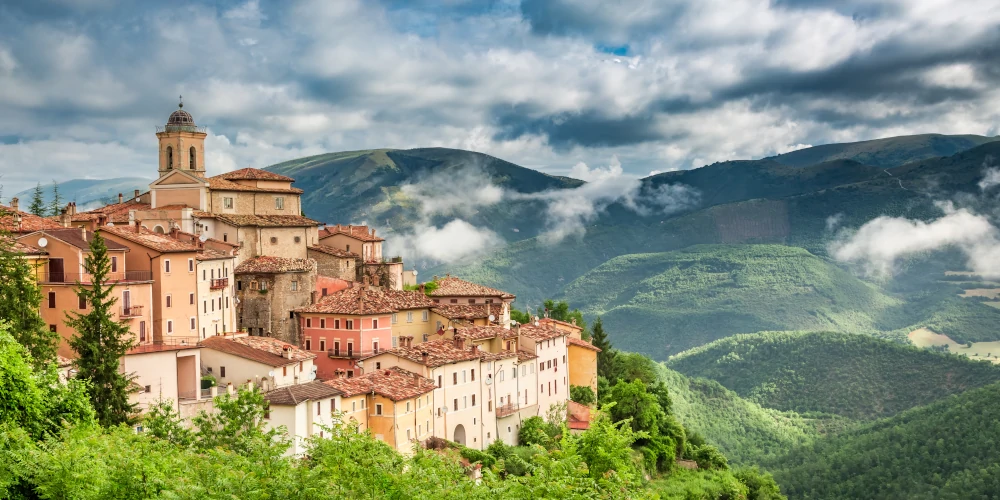Umbria
Umbria is a land of breathtaking beauty, most of it untouched by the industrial age. Medieval towns – Montefalco, Spoleto and Orvieto (among many others) – are secluded between olive groves, vineyards and forests. Umbria is often called ‘il cuore verde d’Italia’ – Italy’s green heart.
The Central Apennines separate Umbria from Le Marche on the east. Val Tiberina (the Tiber river valley) divides Umbria from north to south. The largest lake of Central Italy – Lago Trasimeno – sits in Umbria’s north-east. 1.5 million years ago, most of central Umbria was covered by an ancient lake – Lake Tiberino. It disappeared, leaving behind lacustrine (a type of lake sediment) soils between Todi, Perugia, Montefalco and Spoleto.
Umbria was part of the ultra-conservative Papal state from the 14th century, until it was included by force into the Kingdom of Italy in 1861. The Catholic church still has a massive influence on the region’s culture and traditions.
Umbria is home to one of Italy’s iconic red wines: Montefalco Sagrantino. Made from Italy’s most tannic grape, it enjoys the highest reputation among wine connoisseurs. Orvieto is Umbria’s most popular white wine. The best examples have a golden colour and are made from grapes affected by noble rot. The Trebbiano Spoletino grape is native to Umbria and isn’t really found elsewhere. It produces zesty white wine bursting with flavours of fresh lime and white flowers.



